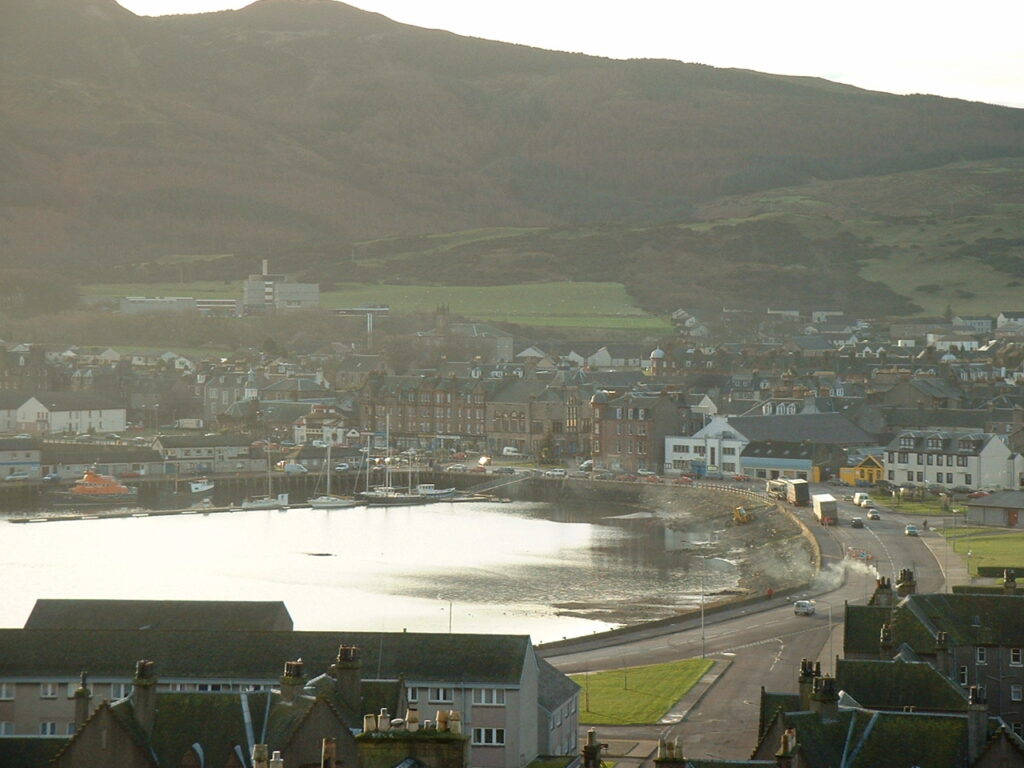

Campbeltown sitting at the head of Campbeltown loch epitomised by the folk song ‘Campbeltown Loch I wish ye were whisky’. 100 years ago so much effluent from the towns 20 + distilleries was pouring in that it almost was!
Campbeltown is of primary importance in Kintyre since it is one of only a handful of settlements of any size in the Highlands. The pastoral economy and difficult communications have long conspired against Campbeltowns prosperity and it’s initial growth was largely the result of royal and baronial policy.
During the 16th Century Scotland was seeking to extend its influence in the highlands and bring these often rebellious and semi – independent districts more firmly into line. To this end the planting of ‘burghs’ at strategic points was adopted as a policy in the hope that these would have a ‘civilizing’ effect on the surrounding countryside. The introduction of ‘lowland’ colonists was seen as essential to the success of this policy and a burgh was created at Campbeltown (or Lochhead) in 1667 with substantial numbers of lowland settlers introduced throughout the 17th century.
Campbeltown Loch provided a secure and sheltered anchorage and the prospect of fertile land and teeming seas attracted lowlanders both fleeing from religious persecution (The Scottish Government was hunting down covenanters in the south west) and looking for a better life. The protection of the Duke of Argyll for these farmers, merchants, and fishermen was assured and with the eventual success of the Hanoverians on the national stage political stability ensured good growth.
Campbeltown has always been closely associatted with fishing and during the 17th Century rents were being paid in herring. By 1685 two masted fishing boats were fishing from Campbeltown and whilst fortunes have varied the area continues to have a fishing fleet employing many local men in its endeavours. (For more information on this area Angus Martins – The ring net fishermen is an excellent source)
As with fishing the history of distilling is lost in the distant past. Whisky must have been produced here for hundreds of years and it is locally accepted that Whisky was introduced to Scotland from Ireland through Campbeltown which at the turn of the 19th/20th Centuries was producing two million gallons a year. Throughout the 20th Century the industry contracted dramatically and to date only two distilleries continue to operate although they produce some of the finest Malts in the world.
Kintyre lies at a cross roads between Highlands and lowlands. Much of the turmoil of the past is reflected in the towns present character. A lowland parish church, originally built for the lowland Scots and English speakers exists only a short walk from the Highland parish church built for the Highland gaelic speaking population. Many other reminders of the past litter the landscape and whilst it is no longer part of the estates of the Duke of Argyll, its industries have contracted and it’s population halved in the last 100 years it remains, beautiful, peaceful, inspiring, and a great place to find a peaceful corner and read a good book.